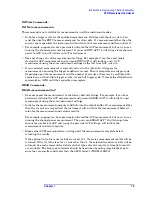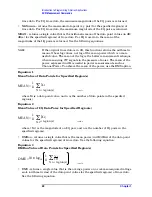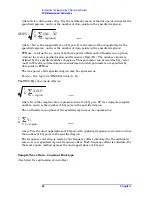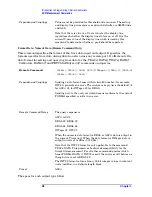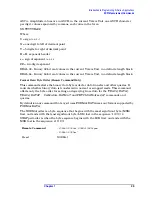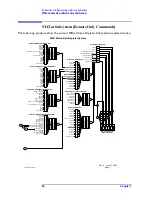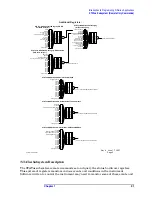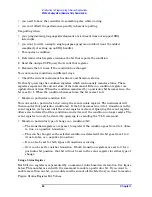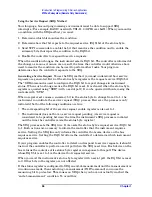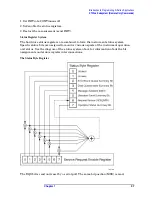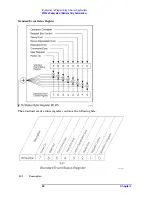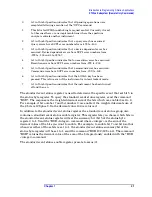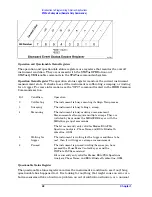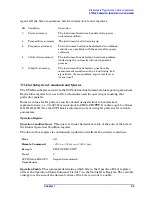
28
Chapter 1
Introduction to Programming X-Series Applications
SCPI Measurement Commands
Format Data: Numeric Data (Remote Command Only)
This command specifies the format of the trace data input and output. It specifies the
formats used for trace data during data transfer across any remote port. It affects only the
data format for setting and querying trace data for the :TRACe[:DATA], TRACe[:DATA]?,
:CALCulate:DATA[n]? and FETCh:SANalyzer[n]? commands and queries.
The specs for each output type follow:
Dependencies/Couplings
Values must be provided for threshold and excursion. The sorting
and display line parameters are optional (defaults are AMPLitude
and ALL).
Note that there is always a Y-axis value for the display line,
regardless of whether the display line state is on or off. It is the
current Y-axis value of the display line which is used by this
command to determine whether a peak should be reported.
Remote Command
:FORMat[:TRACe][:DATA] ASCii|INTeger,32|REAL,32 |REAL,64
:FORMat[:TRACe][:DATA]?
Dependencies/Couplings
Sending a data format spec with an invalid number (for example,
INT,48) generates no error. The analyzer simply uses the default (8
for ASCii, 32 for INTeger, 32 for REAL).
Sending data to the analyzer which does not conform to the current
FORMat specified, results in an error.
Remote Command Notes
The query response is:
ASCii: ASC,8
REAL,32: REAL,32
REAL,64: REAL,64
INTeger,32: INT,32
When the numeric data format is REAL or ASCii, data is output in
the current Y Axis unit. When the data format is INTeger, data is
output in units of m dBm (.001 dBm).
Note that the INT,32 format is only applicable to the command,
TRACe:DATA. This preserves backwards compatibility for the
Swept SA measurement. For all other commands/queries which
honor FORMat:DATA, if INT,32 is sent the analyzer will behave as
though it were set to REAL,32.
The INT,32 format returns binary 32-bit integer values in internal
units (m dBm), in a definite length block.
Preset
ASCii






